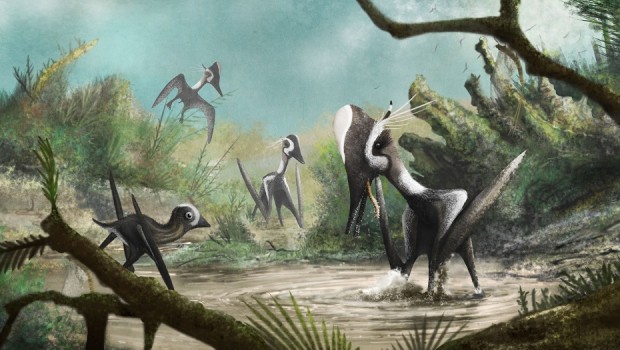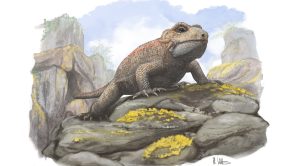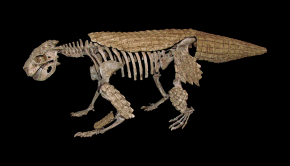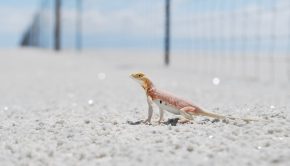Episode 55: Pterosaurs
Pterosaurs were the first vertebrates to achieve powered flight, and lived in the skies above the dinosaurs during the Mesozoic. They’re often mistakenly identified as dinosaurs, but are in fact a separate, closely related group. This group has recently undergone a revival, with more research on pterosaurs happening now than ever before. Where are they found? How diverse was this group? How did they evolve?
Research associate and palaeoartist Dr. Mark Witton from the University of Portsmouth is well-known in the pterosaur community, and answers some of these questions and more in this episode. He’s also provided us with a number of spectacular images below, so make sure you check them out! If you want to learn more about pterosaurs, check out Episode 42 with Colin Palmer on Pterosaur Aerodynamics.
Podcast: Download (Duration: 1:08:28 — 94.0MB)
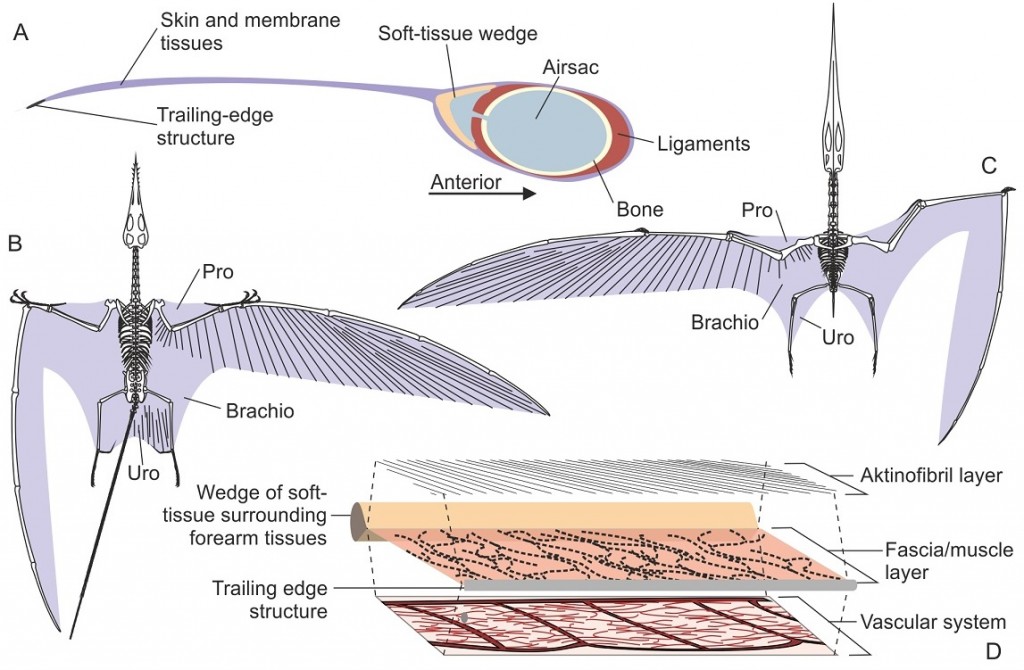
Pterosaurs wing skeletons share some similarities with those of birds and bats, but differ in a number of fundamental ways from both. The leading edge of the wing is comprised of the forelimb bones and a single, enlarged finger (the fourth), which supported a series of membranes anchoring to the legs and body. The wing membranes are complex structures, the internal structure of which has been determined through detailed examination of well-preserved pterosaur fossils. Credit Mark Witton.
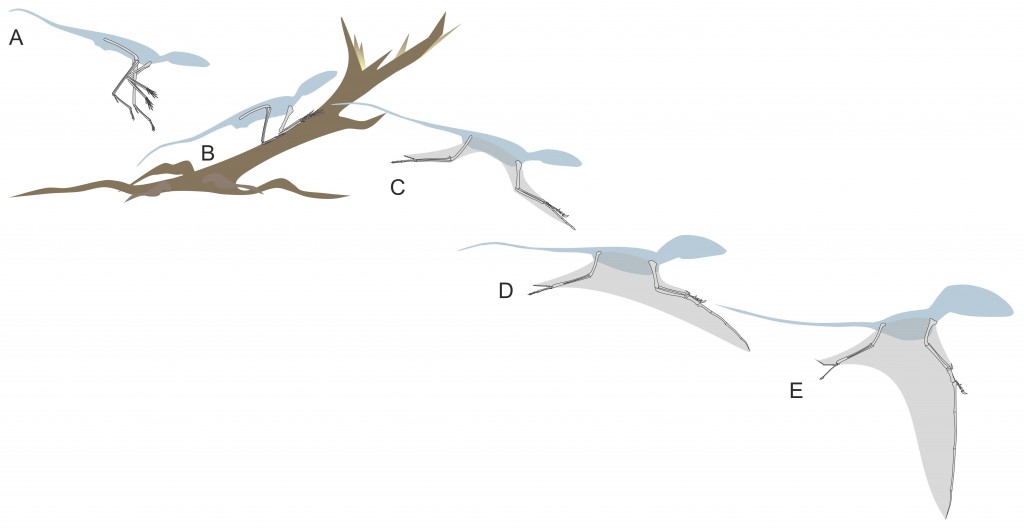
The evolutionary development of pterosaurs from their reptile ancestors is not currently demonstrated by any fossils. However, we can hypothesise some stages of this pathway by reconstructing how they may have developed flight adaptations. Some of these stages are suggested here, taking us from a sprightly pterosaur ancestor not unlike the animals which also gave rise to dinosaurs (A) through climbing and gliding forms (B-D) to a fully fledged pterosaur (E). Credit Mark Witton.
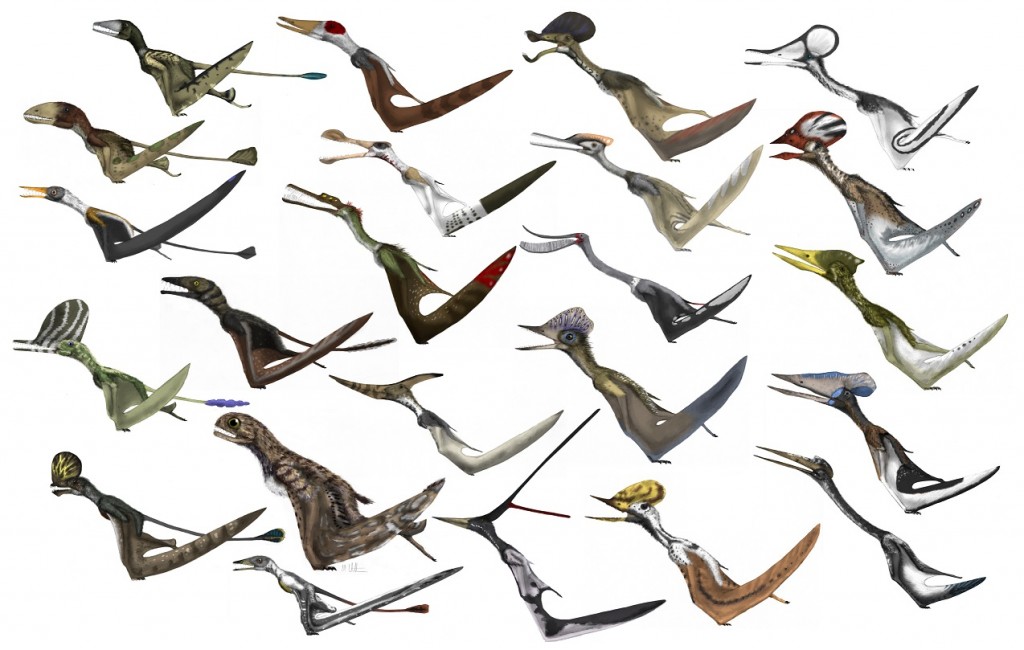
We often think of pterosaurs as just different heads and necks bolted onto the same body, but the truth is that they are enormously diverse and varied, their forms likely reflecting a range of habitat preferences and lifestyles. We know of well over 100 pterosaur species now, the major variants of which are shown here. Credit Mark Witton.
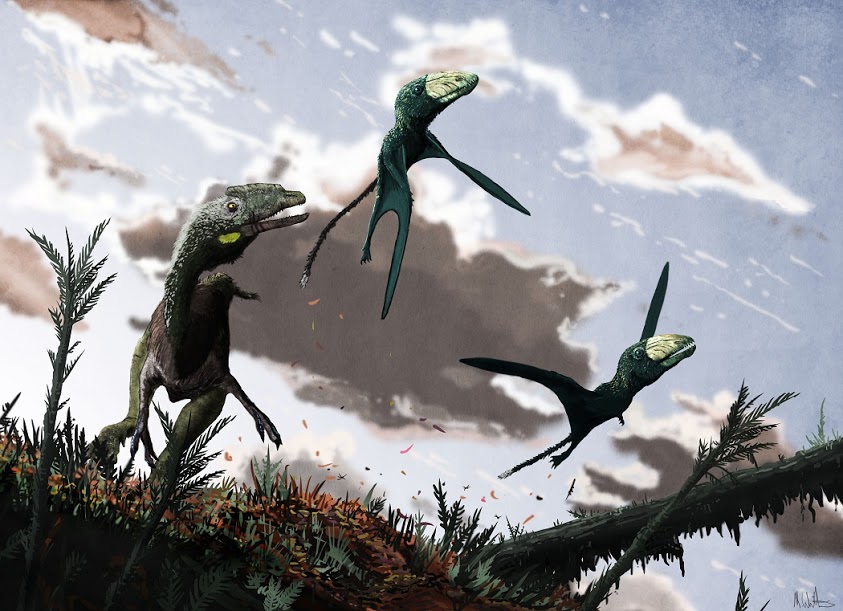
How to make Dimorphodon macronyx fly: chase it down with a carnivorous dinosaur. Some hypotheses of pterosaur flight suggest Dimorphodon may have been a less effective flier than other pterosaurs, and it may have only taken to the air to travel long distance or escape danger. Credit Mark Witton.
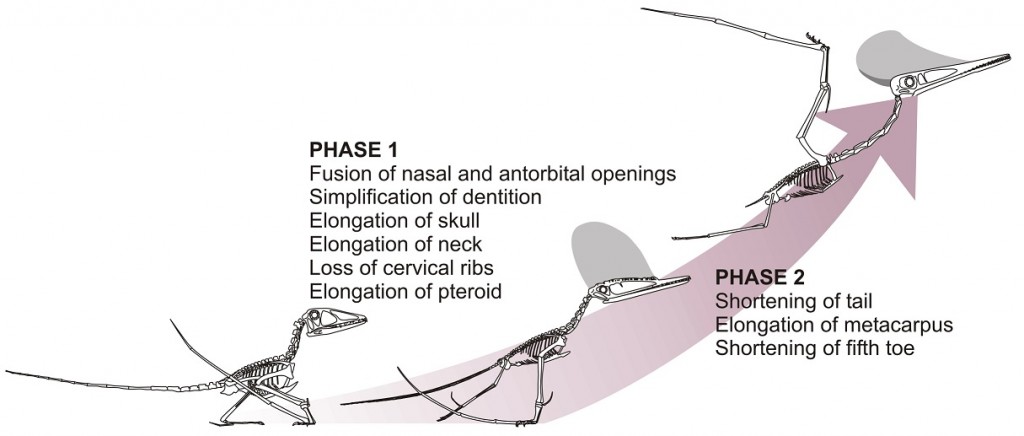
There are two extremes of pterosaur anatomy: species with relatively small heads, long-tails, long fifth toes and short hand bones (shown here on the left), and others with oversize skulls, long necks, longer wing bones, short tails and reduced fifth toes (right). The latter features are typical of a group we call pterodactyloids. Until recently, exactly how pterodactyloids developed from their ancestors was a mystery, but the discovery of Darwinopterus (middle) provides an anatomical ‘bridge’ between these forms. Credit Mark Witton.
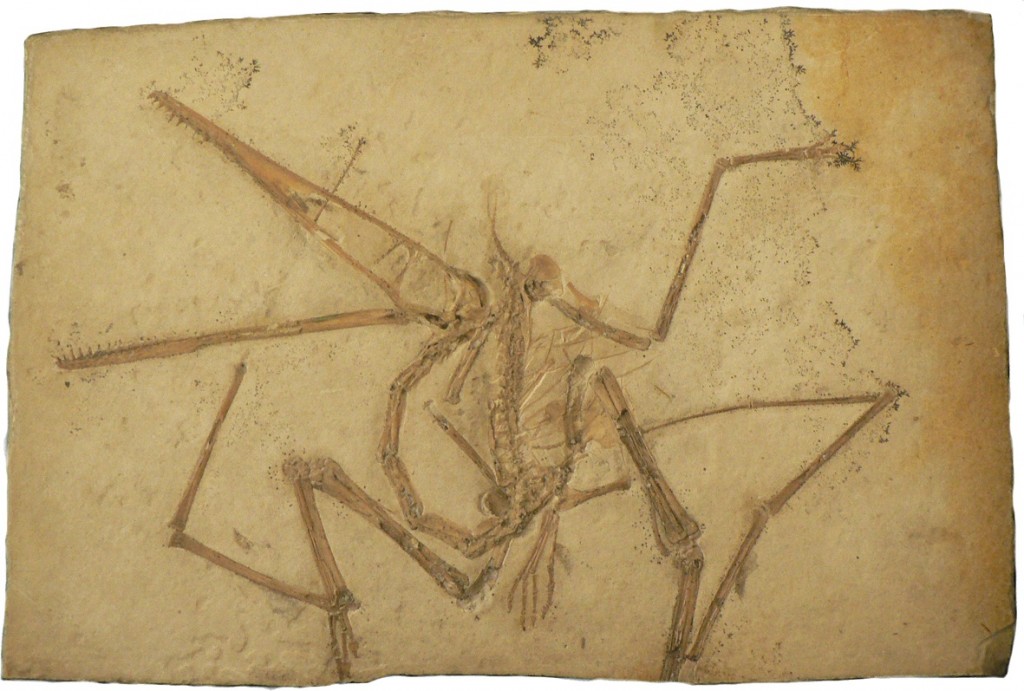
The first pterosaur specimen known to science, representing an animal named Pterodactylus antiquus. The wingspan of this Jurassic German specimen is about 45 cm. Credit Mark Witton.
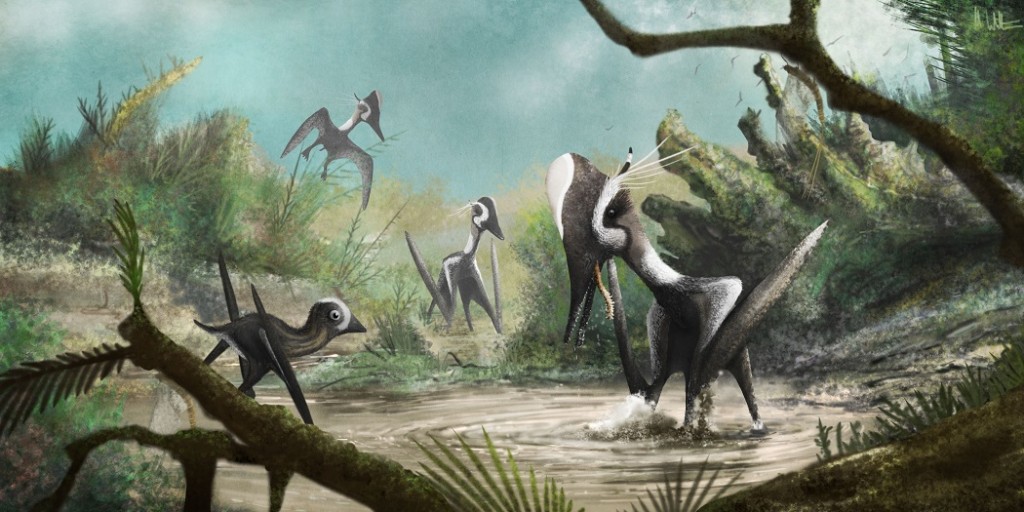
A small flock of Pterodactylus antiquus, represented by small juveniles (left) up to big adults (right) scope out foraging options in a Jurassic marsh. The animal on the right is luring prey to the surface through paddling forefeet, a behaviour common to (at least) several modern gull species. The range of animal sizes and soft-tissue structures shown here are based on known specimens of this animal. Credit Mark Witton.
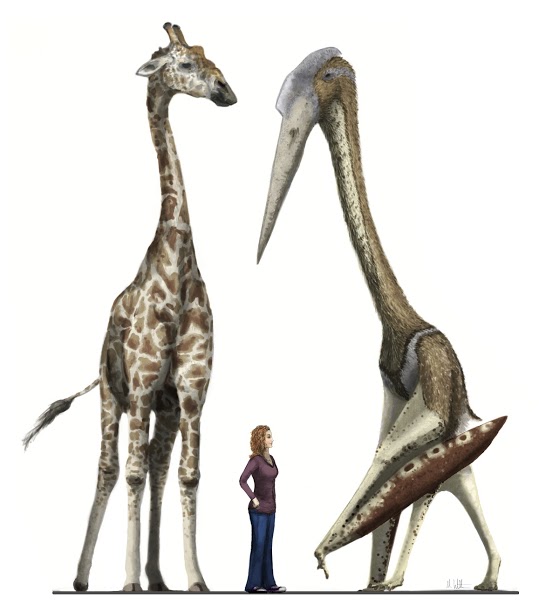
Some pterosaurs were the largest flying animals of all time. Here, the 10 m wingspan azhdarchid pterosaur Arambourgiania philadelphiae stands alongside a bull Masai giraffe, which stands 5.6 m tall. Credit Mark Witton.
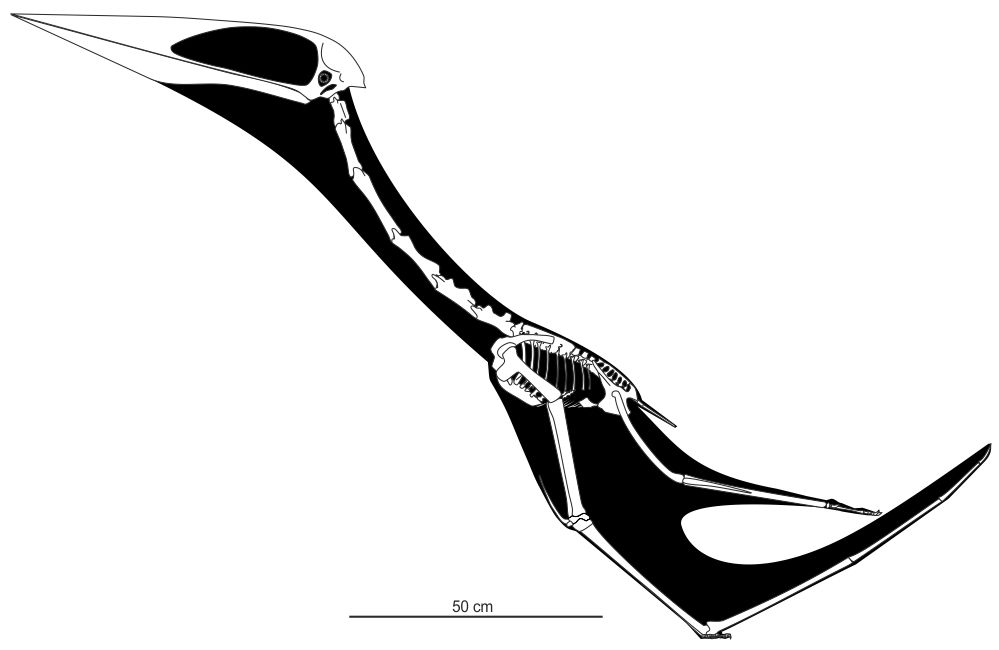
Skeletal reconstruction of the 2.5 m wingspan, Chinese azhdarchid pterosaur Zhejiangopterus linhaiensis, posed in mid-take off. There is compelling evidence that pterosaurs mostly relied on the tremendous power of their flight muscles and arm skeletons to initiate flight rather than using, as seen in birds, a take-off strategy mostly reliant on hindlimb strength. Though bizarre and unfamiliar to us, forelimb-dominated launch is practised by several modern bats and is actually a much more efficient way of achieving flight than the avian approach. Launch strategy is probably one factor (of several) permitting the evolution of giant size in several pterosaur groups. Credit Mark Witton.
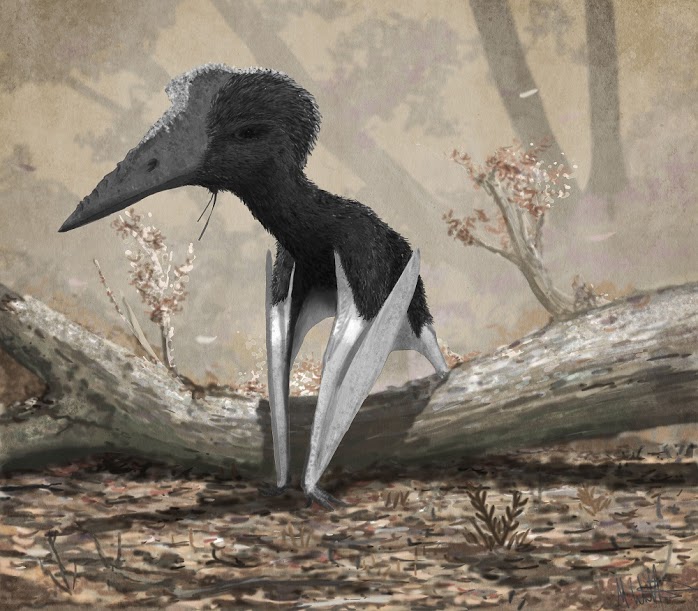
Speculative reconstruction of the pterosaur affectionately known as ‘R2395’, an unnamed short-necked azhdarchid pterosaur from Late Cretaceous deposits of Romania. Credit Mark Witton.
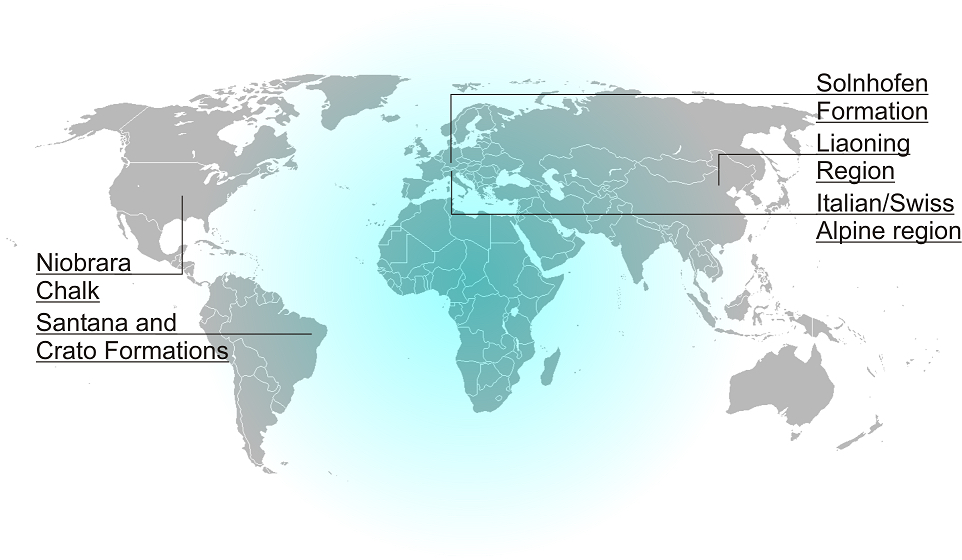
Where can you find pterosaur bones? Pterosaur fossils can be found all over the world but are much rarer than those of other Mesozoic animals. Certain sites – such as those labelled here – are relatively rich in high-quality pterosaur fossils, and discoveries from these localities have been crucial to our modern understanding of pterosaur anatomy and diversity. Credit Mark Witton.

